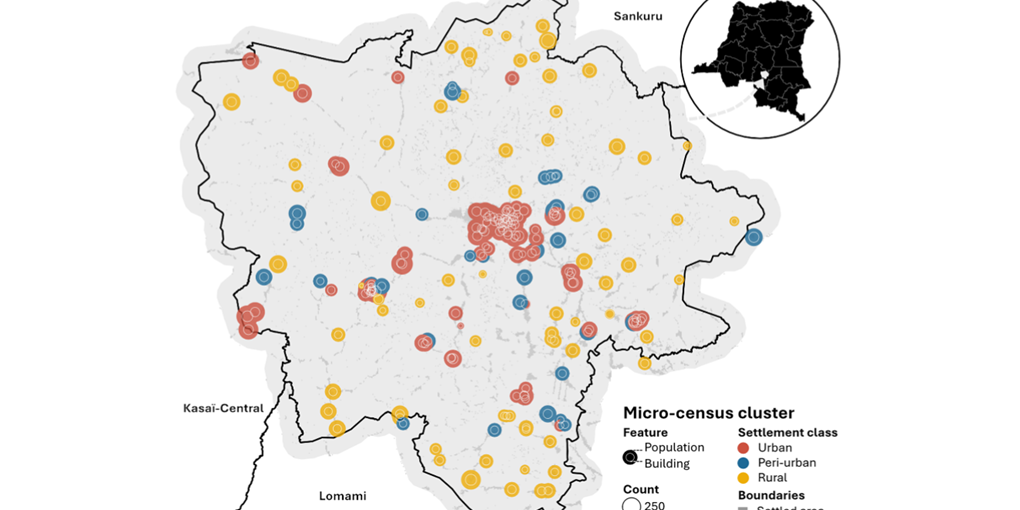Authors
Gianluca Boo, Edith Darin, Heather R. Chamberlain, Roland Hosner, Pierre K. Akilimali, Henri Marie Kazadi, Ortis Yankey, Chibuzor C. NNanatu, Attila N. Lázár, Andrew J. Tatem
Abstract
Most low- and middle-income countries face significant public health challenges, exacerbated by the lack of reliable demographic data supporting effective planning and intervention. In such data-scarce settings, statistical models combining geolocated survey data with geospatial datasets enable the estimation of population counts at high spatial resolution in the absence of dependable demographic data sources.
This study introduces a Bayesian model jointly estimating building and population counts through the integration of geolocated survey data and gridded geospatial datasets. The model provides population estimates for the Kasaï-Oriental province, the Democratic Republic of the Congo (DRC), at a spatial resolution of approximately one hectare.
Posterior estimates are aggregated across health zones and health areas to offer probabilistic insights into their respective populations. The model exhibits limited bias, inaccuracy, and imprecision, as captured by the 95% credible intervals. The estimated population of Kasaï-Oriental for 2024 is approximately 3.8 million, with a credible range of 3.1 to 4.6 million. Aggregations by health zones and health areas reveal significant variations in population estimates and uncertainty levels, particularly between the province capital of Mbuji-Mayi and the rural hinterland.
High-resolution Bayesian population estimates allow flexible aggregation across spatial units while providing probabilistic insights into model uncertainty. These estimates offer a unique resource for the public health community working in data-scare contexts, for instance, in support of a better-informed allocation of vaccines to different operational boundaries based on the upper bound of the 95% credible intervals.
The study relies on data from the 2021 microcensus conducted by Flowminder under the Mapping for Health project, and funded by Gavi, the Vaccine Alliance.
We collected data across DRC from more than 81,000 households between March and April 2021.
